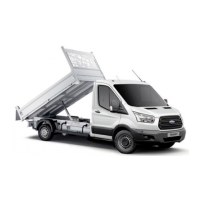31
Tipping
Tipping – General Practice
Tipping is a potentially hazardous operation. It is essential that all
operators fully understand the procedures detailed in this handbook
and are aware of the Tipper controls on the vehicle. Health and Safety
legislation must be strictly applied. UK Construction & Use Regulations
must be observed when operating the vehicle on the public highway.
Common Procedures for Tipping:
The following procedures must be observed before, during and after the
Tipping operation.
Before Tipping:
• Apply handbrake.
• Switch on hazard warning lights.
• Establish that the ground bearing the weight of the vehicle is level and is
firm enough to support the weight of the vehicle. (Maximum gradient
5%). Avoid wet or waterlogged clay, soil or sandy terrains. If available,
have someone direct you to the required position taking the precautions
identified above.
• Check that the area surrounding the vehicle is free from personnel,
equipment and livestock, except for an assistant specifically tasked to
guide you to the area where the load is to be tipped. Health and Safety
(Safety Signs & Signals Regulations 1996) guidelines on verbal or hand
communication must be observed.
• Ensure the area surrounding the vehicle is suitably illuminated. (night
operation)
• Check overhead clearance for overhead cables and power lines, abort tip
or reposition vehicle if there are any overhead cables within the vicinity.
• If the load is sheeted, loosen the sheeting; roll back to the headboard
and tieoff.
• Remove load restraints if fitted.
• Now continue with the tipping operation.
WARNING

